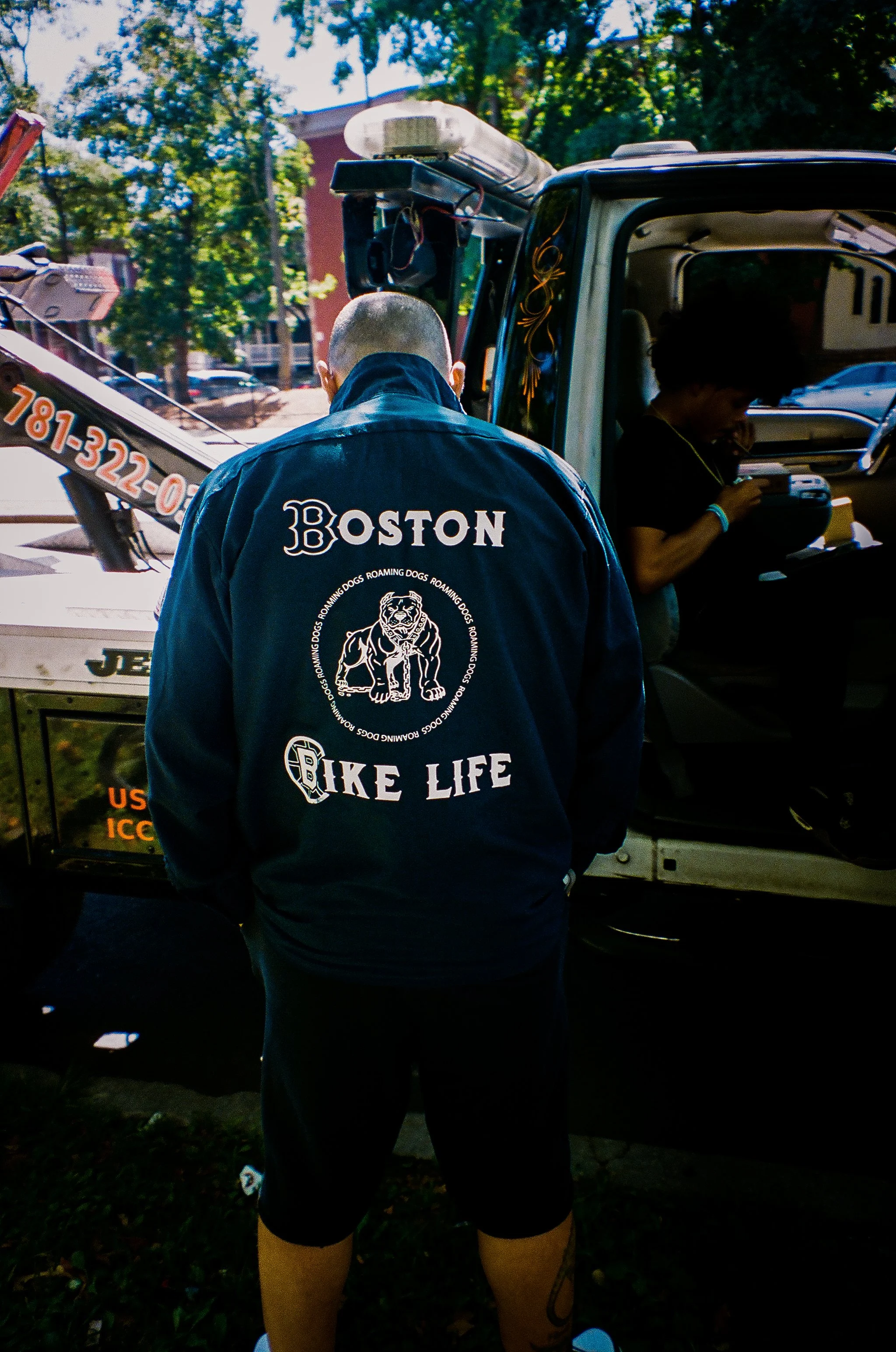Live to Ride
A version of this story appeared in the Boston Globe Magazine
You either love them, or you hate them. Perhaps they’ve swerved in front of your car, pushing the rubber of their tire so close to your bumper that you could practically smell it. Maybe 40 of them cut you off going home down Newbury Street in the middle of a five o'clock jam. It’s certainly possible that you’ve seen their neon, multicolored rims spinning head first into oncoming traffic, be that an MBTA bus or a smart car. But what you’ll never see, are the reasons why Boston’s youth peddles through these streets to begin with.
To understand Bikelife, you have to understand that, to its riders, a bicycle isn’t just a frame with two oversized wheels. It’s an escape. Many Boston riders are young men of color who come from predominantly lower-income backgrounds and difficult circumstances at home, from throughout Greater Boston. Groups like theirs have been negatively conflated with motorcycle gangs, but the reality is far warmer — they share love for one another and for where their chrome- and decal-covered bicycles can take them. They're performers, the streets their stage.
“A couple of them are a little bit lost, but when it comes to Bikelife, they’re found,” says Julian “Roaming” Rivera, describing the international movement of underground riding groups. “In Bikelife, if you know how to ride it doesn’t matter how you look, there’s no discrimination or prejudice.”
Rivera, 44, founded the Roaming Dogs riding group and is older than the typical rider. He’s transformed the local Bikelife movement in the three years he’s been involved, from planning his own Roaming Dog rideouts to taking a squad to New York City for the first time.
The escape that Bikelife provides its riders is something of euphoric nature, felt and known to all who ride. The moment that their feet hit the pedals, the weight of all their burdens melt off and blur into the distance as they leave their reality behind them, trading it for the luminescent bulbs and signs that blanket our city.
Every rider that takes a spin in Rivera’s tow truck signs their name or instagram handle on the glove box with a black sharpie.
At 16, the day after he got his first big-wheelie bike, Jojo Sandonato was shot in the neck by a stray bullet when he and some riders stopped for a bite to eat. “I almost accepted that this was my death. I really thought my parents weren’t going to have a son anymore,” he says. “It has nothing to do with the kids, or the people [in Bikelife], it’s the areas of where these kids are growing up and where they’re riding their bikes.” Rivera has seen neighborhood violence firsthand. “There’s more access to guns than healthy food,” he says. “This is an escape from all of that. We can laugh, we can smile, we can have fun.”
For Sandonato, Bikelife promises even more: to become a star athlete, someone with a platform, someone with a voice.
“Pedal bikes have made me who I am today,” he says. “It turned me into a somebody. I have kids that look up to me, and if it weren’t for the bikes I wouldn’t be in this position.”
There’s a reason why you hate them. Maybe it’s because you secretly wish you were there alongside them, letting your fears and worries absolve instead of sitting bumper to bumper on Boylston watching them weave and glide by. For whatever grudge it may be that you hold, I do have unfortunate news for you: these are not your streets, and they never will be. They’ll forever belong to those that have no other choice but to Live To Ride.







